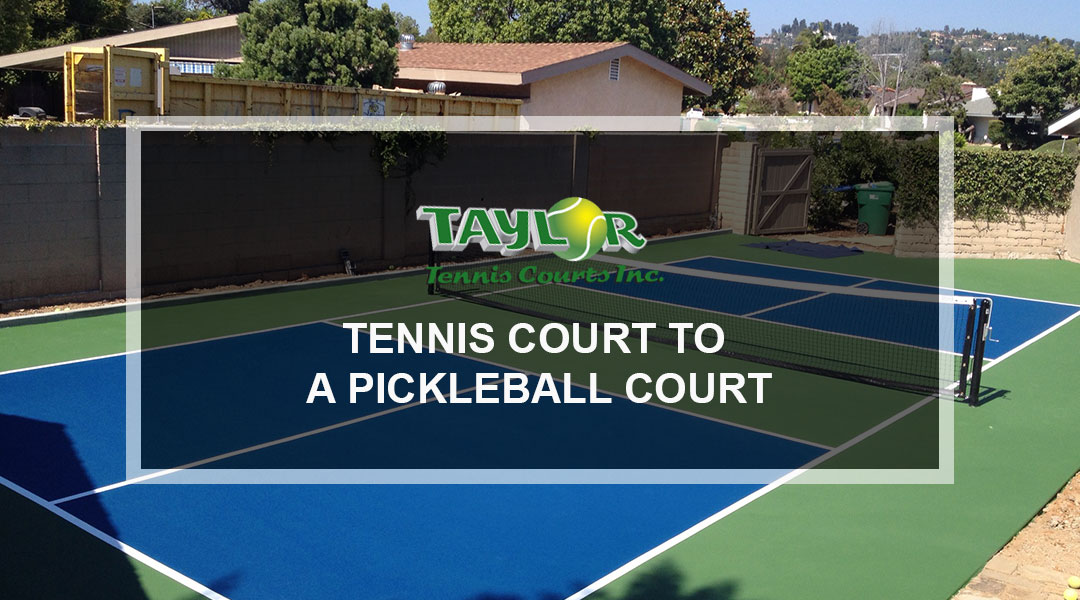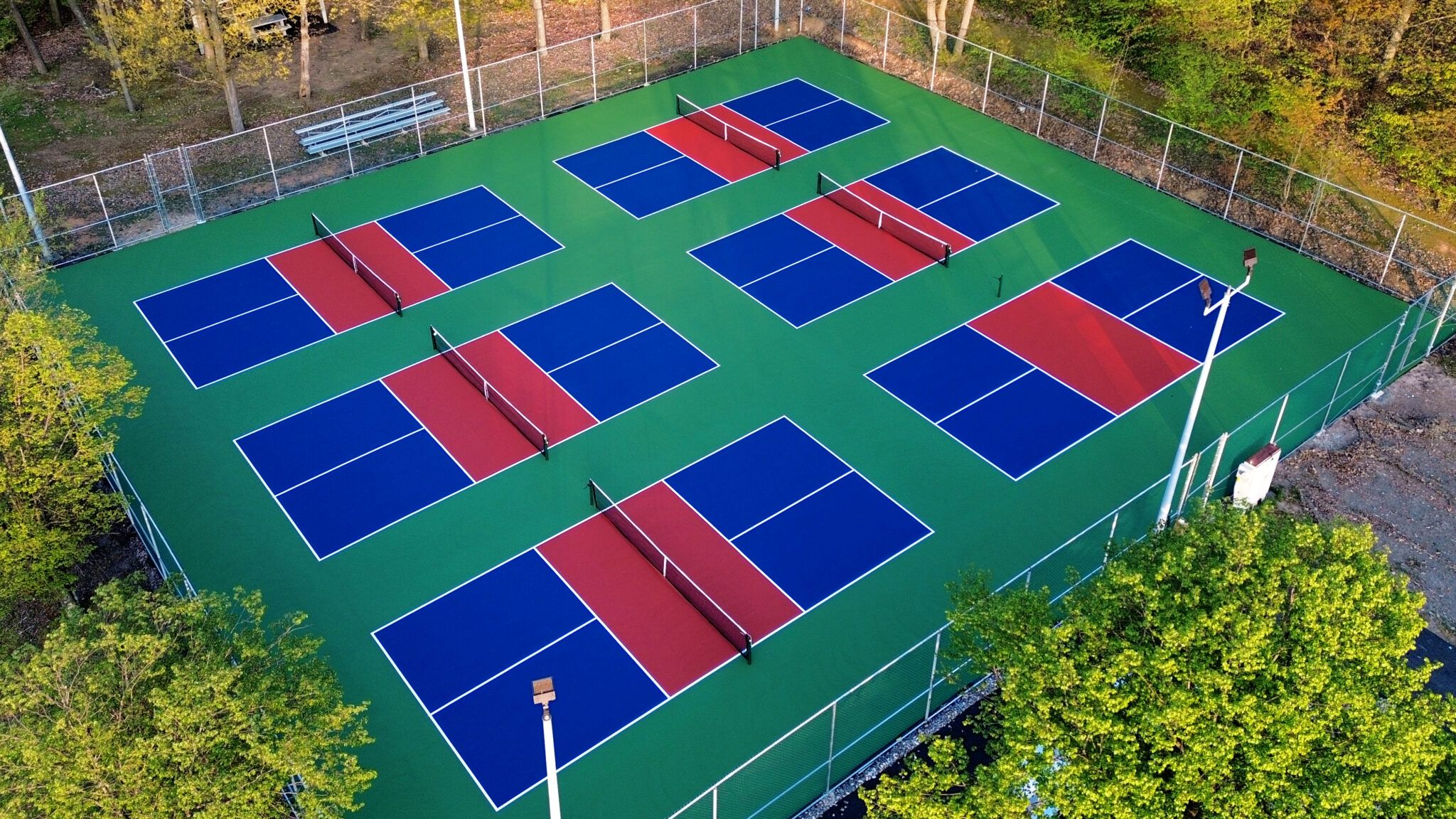Professional Pickleball Court Construction-- From Style to Installment
Professional Pickleball Court Construction-- From Style to Installment
Blog Article
Lasting Practices in Pickleball Court Building And Construction You Ought To Know
As the popularity of pickleball proceeds to climb, so also does the requirement for sustainable methods in court construction. The influence of these methods extends far past the court itself.
Choosing Eco-Friendly Products
Selecting environment-friendly products is an essential step in the building and construction of lasting pickleball courts. The choice of sustainable materials not only lessens ecological effect however additionally enhances the long life and performance of the court. Trick products include reused rubber for the surface area, which offers superb resilience and shock absorption while diverting waste from land fills.
Furthermore, using locally sourced products decreases transport emissions and supports local economic climates. Pickleball court construction. For instance, using indigenous hardwoods for fencing and seating can provide a lasting aesthetic while ensuring strength against the aspects.
Integrating absorptive materials for court structures can further add to sustainability by permitting all-natural water drainage and decreasing drainage. These choices not only secure neighborhood communities however additionally advertise healthier play atmospheres.
Efficient Drainage Solutions
While the choice of environmentally friendly products is crucial, applying effective drain options is similarly vital for maintaining lasting pickleball courts. Correct water drainage not just safeguards the court surface from water damages however also reduces erosion and overflow, advertising ecological stability.
Effective drainage systems can consist of permeable paving, which permits water to penetrate the ground instead of merging on the surface area. This lowers the chance of standing water, which can bring about mold and mildew and other maintenance concerns. In addition, integrating strategically put drainage channels and swales can direct excess water far from the court location, guaranteeing a completely dry playing surface area and stopping soil disintegration.
Using indigenous plant life in the landscape design around the courts can further enhance drain by soaking up excess water and minimizing runoff. These plants call for less watering and promote biodiversity, straightening with lasting techniques.
In addition, it is essential to regularly maintain the drainage system to guarantee its lasting performance. This consists of cleaning particles and monitoring for blockages. By prioritizing efficient drainage remedies, pickleball court constructors can significantly add to the sustainability and long life of the facility, eventually profiting both players and the atmosphere.
Energy-Efficient Illumination Options
As the need for pickleball continues to grow, integrating energy-efficient lights options into court layout has become significantly vital for sustainability. Conventional illumination systems frequently eat extreme power, adding to higher operational expenses and environmental impact. As a result, embracing modern, energy-efficient innovations is crucial for both new constructions and improvements.
LED (Light Emitting Diode) illumination sticks out as a leading selection due to its durability and energy financial savings (Pickleball court construction). Compared to conventional lighting, LEDs use approximately 75% much less energy and can last up to 25 times longer, significantly minimizing upkeep expenses. In addition, dig this the directional nature of LED lights lessens light air pollution, ensuring that illumination is concentrated on the court as opposed to bordering locations.

Sustainable Surface Alternatives
Exploring lasting surface alternatives for pickleball courts has actually obtained grip among gamers and home builders alike. The focus on environment-friendly materials not just aligns with the expanding ecological understanding but also enhances the efficiency and resilience of the courts.
One prominent alternative is the use of recycled rubber, which can be sourced from made use of tires. This product gives visit this site right here excellent shock absorption, reducing the risk of injuries for players while advertising sustainability. Furthermore, modular tiles made from recycled plastics provide an additional feasible alternative. These ceramic tiles are very easy to change and mount, and their flexibility allows for different court configurations.
Natural lawn courts are likewise emerging as a sustainable choice, advertising biodiversity and lowering the heat island effect. However, they require normal upkeep and water, which may not line up with all sustainability objectives.

Water Conservation Strategies

Another reliable method entails the setup of rain harvesting systems. These systems collect and keep rainwater for usage in maintaining court surface areas and landscaping. This technique not just conserves drinkable water yet additionally reduces reliance on municipal sources.
Moreover, employing drought-resistant landscaping around the courts is crucial. Indigenous plants require less water and are better adapted to regional climate problems, hence decreasing overall water consumption. Furthermore, using reliable irrigation systems, such as drip irrigation, makes sure that water is provided straight to plant origins, decreasing evaporation and waste.
Conclusion
Incorporating lasting techniques in pickleball court building and construction significantly adds to ecological conservation and resource efficiency. Utilizing environmentally friendly materials, implementing efficient see post drainage solutions, and adopting energy-efficient lights choices can considerably decrease eco-friendly effect. Discovering lasting surface choices and employing water preservation strategies boost the overall sustainability of these entertainment facilities. By focusing on these practices, the building and construction of pickleball courts can align with broader ecological objectives while promoting durability and capability within communities.
As the popularity of pickleball continues to rise, so too does the need for sustainable practices in court building.Selecting eco-friendly materials is an important step in the construction of sustainable pickleball courts. By focusing on energy-efficient lights choices, pickleball court manufacturers can add to a much more sustainable future while meeting the demands of stakeholders and players alike.Incorporating sustainable surface alternatives not just boosts the efficiency of pickleball courts however likewise paves the way for applying efficient water conservation methods.Integrating sustainable methods in pickleball court construction dramatically contributes to environmental preservation and source effectiveness.
Report this page